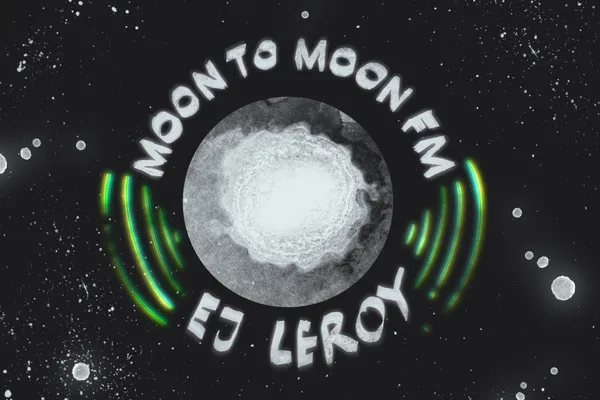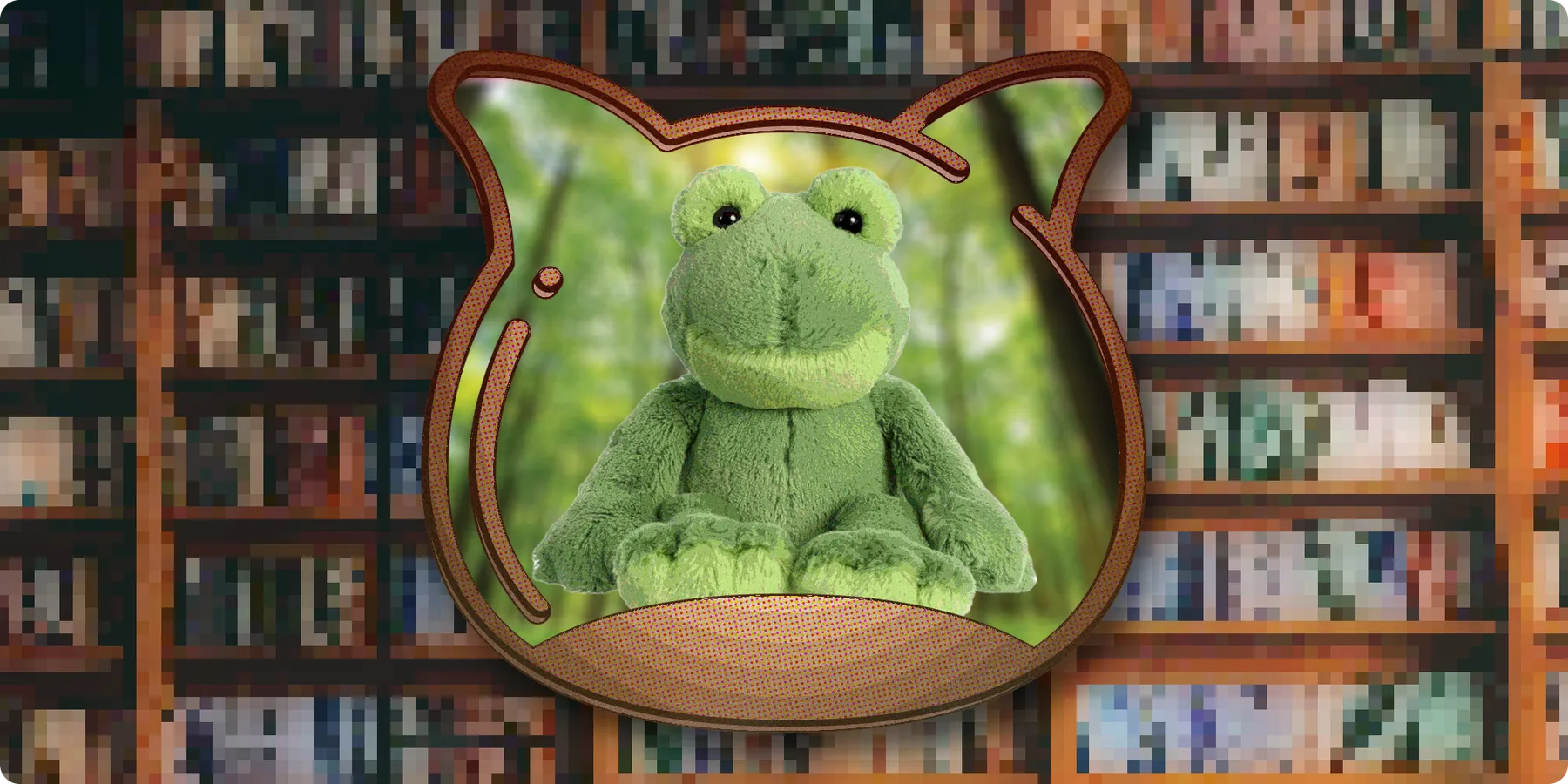
📻 Moon to Moon FM
by E.J. LeRoy
How a symbol is created for all of history


Each day brings with it innumerable tragedies – who can count the cost of even a single minute upon this teeming ball of billions? And yet, amongst the endless sufferings of humanity, the greatest loss of this millennium can easily be pinpointed. Surely no deeper wound could ever be struck than the one we endured on February 27, 2023.
Of course, only one of us felt it at the time. On that day – a Monday, naturally – Lily Dequesne, four-year-old daughter of Marie-Lee, was snatched from her room and spirited away by a sick, sick man. Having taken her, this villain then panicked and abandoned whatever horrible plan he’d set in motion, enacting an even worse one in hopes of escaping punishment for his sins. This much can be gleaned from the note he left behind, the rambling, apologetic one that told us Lily’s last words were “tell my mummy I love her.” This paper was pinned atop a picnic table by a bloodied rock and poor Lily lay beneath, stuffed frog clutched in still hands, one of her little pink sneakers missing to reveal an angelically clean ankle sock – a vision of violence and vulnerability that would shake the world to its foundations. The monster’s identity was never confirmed, a mystery that would echo down through the ages.
Marie-Lee, of course, was devastated. She weathered the ensuing media storm with as much grace as was possible for a mother in the throes of the worst possible pain, and her dignity, her aching love for her daughter, made her a worldwide sensation. Determined to keep attention on her child – and the search for her killer – Marie-Lee announced the founding of a charitable organisation in Lily’s name, which she headed herself. And this was no mere lip service; within a month of Lily Dequesne’s death, the group that bore her name had raised and donated over five hundred thousand dollars for services dedicated to protecting children and supporting parents in need. Marie-Lee, formerly a single mother and casual clerical worker, had found her true calling. And this was just the beginning.
In 2024, the Australian government proposed a change to legalities around child-based cases, calling it Lily’s Law. Stickers emblazoned with this alliteration appeared on cars and traffic poles overnight. TikToks and Facebook reels spread awareness of the tragedy to those who had somehow missed it, and #lilydequesne and #lilyslaw trended on every social site. Marie-Lee spoke at any event and symposium that would have her, delivering a message of hope and perseverance – her daughter’s unwitting legacy – to as many ears as she could. In 2025, she was declared Australian of the Year and appeared on the cover of Rolling Stone with Rosie Batty, Grace Tame, and Taryn Brumfitt; later that year, the outback town of Humpty Doo – where Lily had been born in 2019 before Marie-Lee moved them south to Adelaide – erected a statue of their most famous export. The effigy became just as much a symbol of hope in the face of despair as the best-known photos of its subject. Many made the pilgrimage across the world to see it in person, millions more watched videos online, and no matter the medium, the statue’s expertly carved eyes gained a near-religious reputation for reducing spectators to tears.
But this was not enough for Marie-Lee. She pushed public awareness higher until every single country felt as though little Lily had been one of their own. Tribute sites were set up all over the world, online and at select physical locations that quickly overflowed with flowers and handmade gifts. Murals depicted her on the sides of buildings, buses, wharves, entertainment centres. Dozens of songs were written in tribute to her, at least three of them smash hits, none of them performed by Elton John. Statues grew from the ground in towns other than her birthplace, and the Melbourne City Council named a laneway after her. Conspiracy theories sprung up as thousands joined the hunt for Lily’s killer, naming such disparate and unlikely suspects as Joe Biden, a rogue dingo, and the hungry ghost of Jeffrey Epstein.
The attention wasn’t all innocent or unquestioning, though; as always, some people had to be contrarian, or were critical of the charity’s burgeoning success and the concomitant exploitation of a child who’d never agreed to any of this. Right-wing pundits decried the commoditisation of compassion as though allergic to the stuff, whilst left-wingers claimed this focus on a single innocent victim – a blonde, blue-eyed white child, no less – took attention away from millions of other worthy causes. Controversy erupted when people began to cosplay as Lily for Halloween or Instagram videos, and a satirical burlesque show at the Adelaide Fringe featuring a performer stripping to pink pasties and a single sneaker whilst clutching a stuffed frog was picketed into oblivion for poor taste. 4chan posted links to amateur porn sites where starlets adopted the child’s costume and pretended to cry as a faceless man graphically “violated” them, and snickering trolls briefly made this category the most popular across all the major smut aggregators.
Awareness of Lily Duquesne hit critical mass. It seemed no conversation was complete without a reference to her, and when words failed or it started to feel weird and performative, people adopted a shorthand: twisting one fist by their eye to mimic a child’s tears, enacted with a solemn gravity that reduced less reverent folk to fits of laughter. But the girl’s influence continued to resonate, a geist for all zeiten. The next female candidate for Australian Prime Minister proudly thrust a stuffed frog into the air at her iconic press conference. Margot Robbie underwent drastic CGI de-ageing to play Lily in a Hollywood tentpole with Steve Buscemi cast as her nameless killer, implied to be Satan himself striking at the very heart of the world. A new strain of lily named Duquesne became the most popular flower on the planet. Donald Trump dismissed her as a fad and then a fake, a fiction portrayed by a crisis actor. The poor dead child could not have been more visible, more beloved, more mocked, more hated.
Not so many years later, when climate change proved its existence once and for all by flinging humanity into a spiral of environmental destruction and existential despair, some desperate supplicants turned to Lily instead of their old gods. She seemed no less absurd a martyr than any other; like them, she was said to have walked this earth among its peoples, was known to have suffered and died and highlighted our best and worst natures by doing so. Marie-Lee was long dead, along with anyone who had personally known the girl, so nothing remained to tether faith to fact. As the decades went by and information about the old world corrupted into illegibility – records corroded, memories faded, stories shifting in the endless retelling – shrines to this unshod goddess were erected all around the world, in newly coastal homes awash with dirty water or formerly verdant ones now stranded on desert sands. Crosses still stood and Buddhas still smiled, prayer mats were faced to heat-struck Mecca and modest mezuzahs kissed – but more often than not, when one paddled into another’s home, they would find a blessed drawing or driftwood statuette of Lily Duquesne on the mantle.
So when the heavens turned red as blood and the aliens finally came, it’s no wonder they assumed that our holy of holies was a little dead girl in one sneaker, clutching a stuffed frog.